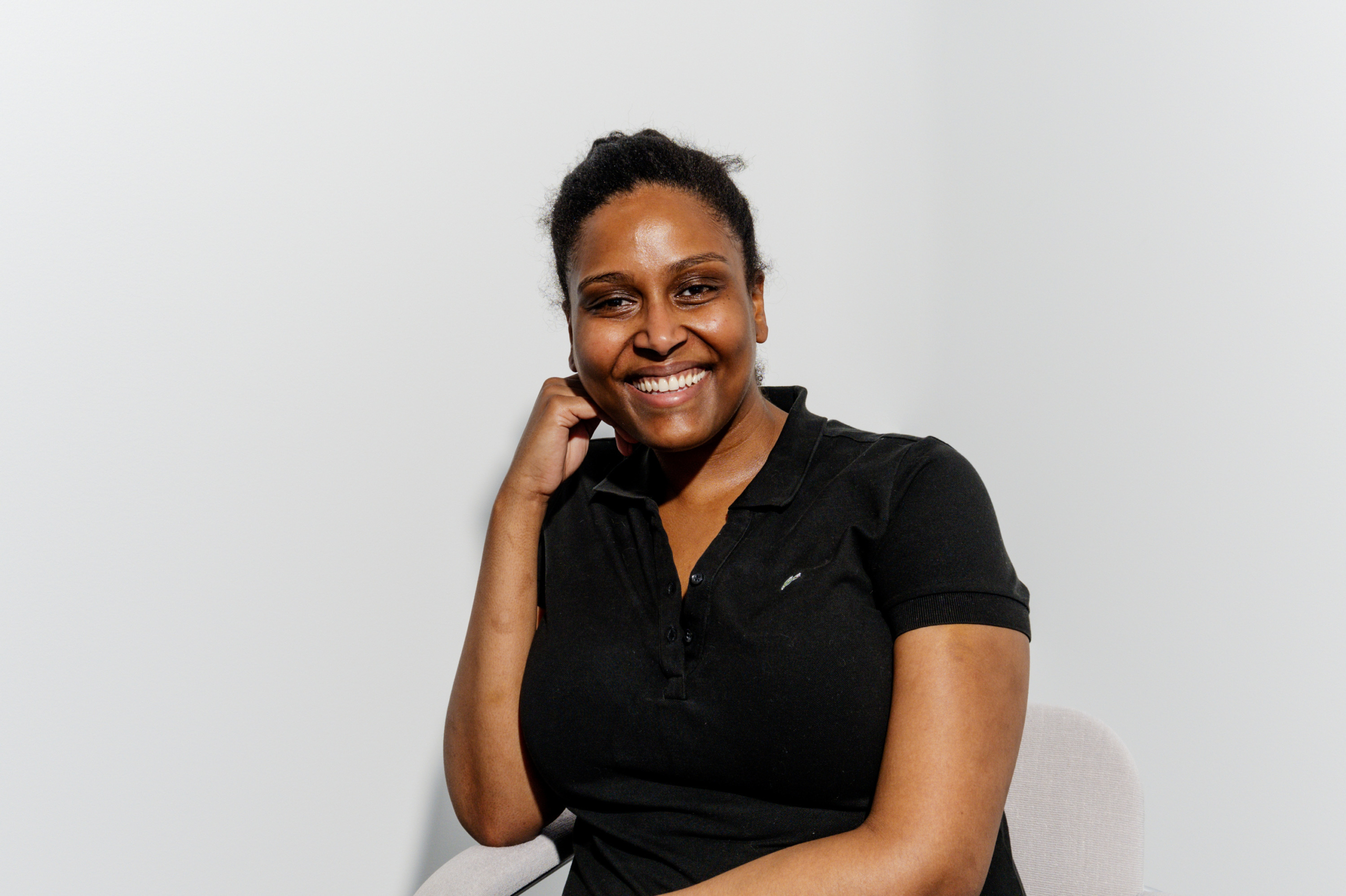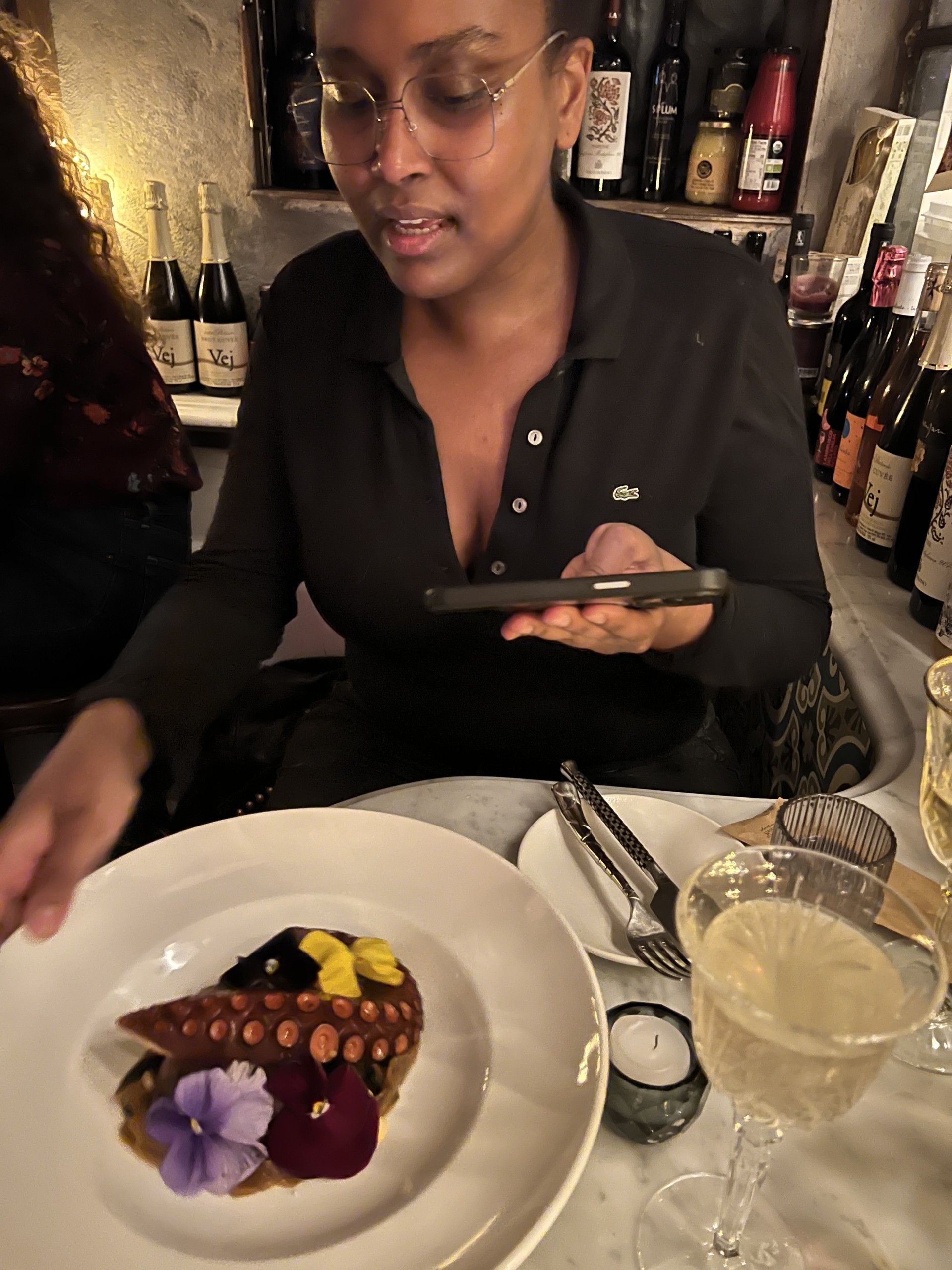Sign up for The Media Today, CJR’s daily newsletter.
In late March, after starting her year with meals at more than a hundred restaurants and bars, Tammie Teclemariam tested positive for covid. Teclemariam is the “diner at large” for New York magazine, where she writes a weekly newsletter on eating out, but before that she may have been best known as one of mainstream food media’s most effective critics; for more than a year, her name on Twitter was “Unionize Condé, Fast.” So instead of going out to celebrate the news that workers at Condé Nast had formed a union, she placed a takeout order from Peter Luger: an eighty-dollar, dry-aged, bone-in ribeye steak, medium rare, plus a Caesar salad, potatoes, and a twenty-five-dollar bottle of cabernet. She put it on her New York expense card, this being work from home.
In June 2020, she’d gained attention on Twitter for publicizing a photo of Bon Appétit’s editor in chief, Adam Rapoport, who is white, dressed as a Puerto Rican for Halloween. BA staff denounced Rapoport and called the image symptomatic of discrimination at the magazine and its parent company, Condé Nast. Rapoport promptly resigned, as did a BA video producer (and a Los Angeles Times food editor whose transgressions Teclemariam also publicized on Twitter).
Emma Specter, a Vogue staffer, called Teclemariam “our champion.” She told me, “Seeing Tammie act as a whistleblower and then really support the idea of me and my colleagues having a union and having protection and being able to fight—I so admire that.”
“I was incredibly happy to see that all the other Condé publications were finally able to get to this point, which I have always believed was inevitable,” Teclemariam texted me from quarantine at her apartment in Ditmas Park, Brooklyn, where she lives with five roommates and her border collie mix, Buffer. “The news kind of jostled me into my past life, because the newsletter has been so intense.”
As diner at large—a one-year, full-time role—Teclemariam’s position is distinct from that of a traditional restaurant reviewer. David Haskell, New York’s editor in chief, said he conceived of a writer “inhaling an enormous amount of food and restaurant culture, and writing back their dispatches with a kind of manic energy, as if they were a global correspondent.”
The application required an essay about a recent dining adventure. Teclemariam’s contribution about a day in Brighton Beach stood out, Alan Sytsma, the editor of Grub Street (New York’s food-focused vertical), said. “She had this lovely paragraph that described the raw cured salmon that she was eating with some vodka on the beach before she went to dinner.”
“You just want to sit shotgun next to this person,” Haskell said.
For the first installment of the newsletter, called “The Year I Ate New York,” Teclemariam visited twenty-six establishments in five days. Since then, she’s continued to assemble a sort of restaurant mosaic of the city—telling readers about the best places to get broth, the diverse array of dining establishments along the Q line in Brooklyn, and the Sri Lankan restaurants of Staten Island—while an illustrated pushpin map traces her picaresque journey.
Recently, I met Teclemariam for lunch at an Indian fried chicken spot called Rowdy Rooster in the East Village. Thirty-two, she was dressed all in black, with a T-shirt from a Ditmas Park wine shop and sunglasses. She ordered almost every item on the menu, picking the hottest option across the board. “The spice will bring us together,” she assured me.
A cashier congratulated us on our order: “Trust me, guys, you’re not going to want to go out tonight.” Teclemariam took down the quote.
“I love it when people are characters,” she told me. We settled into a small table by a window. Lunch, she said over the blare of Indian pop music, is her favorite meal of the day. “It’s so hopeful—it’s like, we’re going to eat this awesome meal and then…” She trailed off, gesturing at the possibilities.
To maintain her appetite, Teclemariam walks long distances between stops on her itinerary. Recently, she trekked from a dinner at Bernie’s, in Greenpoint (which she likened to “the fantasy of an Applebee’s commercial”), across the Williamsburg Bridge to a second dinner in the West Village. By the time she arrived, she was hungry again. “There’s nothing worse than being too full in a restaurant when everyone’s having a good time,” she said. “It’s like being too drunk at a bar.”
Teclemariam arrived in New York in 2013, working first as a sales representative for a wine importer. The company represented a winery in the South of France, where she had just spent six months studying viticulture. Her French pronunciation is precise but nonchalant (she says “bon appétit” correctly, without the hard t).
She was raised in Maryland, where her parents settled after emigrating from Eritrea. At sixteen, she enrolled in St. John’s College in Annapolis, but bristled against the overwhelming whiteness of the school’s “great books” curriculum. At eighteen, she left to attend pastry school in France, interning at a two-Michelin-star kitchen in Lyon, before returning to finish her degree. “I loved food, I wanted to work with it, blah blah blah,” she said. “But I just could not see a career coming out of it, with all the toll and guaranteed suffering that I would endure, and not just suffering that would teach me something, but the general cruelty you would endure as you’re sort of leveling up the industry.”
Unsuccessful in wine sales—“I didn’t know anybody in New York at all,” she said—Teclemariam spent the next six years working at retail wine shops. In 2015, she interned at Eater, and in 2017, she began to freelance for Saveur, Food & Wine, and other outlets. In the spring of 2021, she took her first regular writing job, contributing food and wine stories to the new incarnation of Gawker.
Before her viral Twitter advocacy, she said, “I just didn’t see the way that I was going to be able to participate or succeed or exist in this thing, at which I was actually very qualified and adept, and saw myself as more fit than the people who did have the opportunities and the people who were running things.”
Between bites of blazing-hot chicken and cooling sips of mango lassi, I asked if Teclemariam had worried about alienating powerful editors with her tweets, becoming persona non grata in food media.
“Never. No. Why?” she said. “Persona non grata to who? Nobody I would care about. The people who had to quit their jobs are the PNGs.”
On the contrary, she believes the exposure gave her more opportunities. “Obviously, it made it possible for me to have this job now.” Without it, she said, “I wouldn’t have been noticed.” (Sytsma said she was hired on the merits of her credentials and writing.)
Part of what makes Teclemariam stand out, Jazmine Hughes, a friend and New York Times reporter, told me, is her humor—acerbic and lightning fast. It reminds Hughes, she said, of Judge Judy, whom she profiled for the Times magazine. “One of her producers was like, ‘She couldn’t be this mean if she weren’t so funny.’
“I think that part of the reason why Tammie’s work two years ago caught so much fire is because of the voice of her writing,” Hughes said. Case in point: her most-shared tweet, about Rapoport. When a Puerto Rican food writer shared a rejection from the editor on Twitter, Teclemariam responded with the damning photo, captioned: “I do not know why Adam Rapoport simply doesn’t write about Puerto Rican food for @bonappetit himself!!!”
Teclemariam has always considered herself a loner. That has also helped her chart her course in the world of food media, where there are almost no Black food critics, and few Black writers. Speaking up, said Teclemariam, “was very easy for me, because I was doing it for myself, as much as anyone else. I was just trying to make this really messed-up industry have a place for me, in making it have a place for other people.”
Alone is how she prefers to dine, too. (“Leave single diners alone already!” she wrote in a recent newsletter.)
After lunch, we headed to a nearby Van Leeuwen for pistachio ice cream affogatos. “The perfect thing after all that oily spice,” Teclemariam—not usually a dessert person—said. We parted ways. Several hours (and some Tums) later, I checked in with her to see if our cashier had been right about not going out that night. At first, Teclemariam agreed: she’d had enough. Then, at 10pm, she texted back with a photo from a Japanese izakaya in Brooklyn, where she’d ordered croquettes, pickles, and a cocktail. She’d gone alone.
Has America ever needed a media defender more than now? Help us by joining CJR today.




